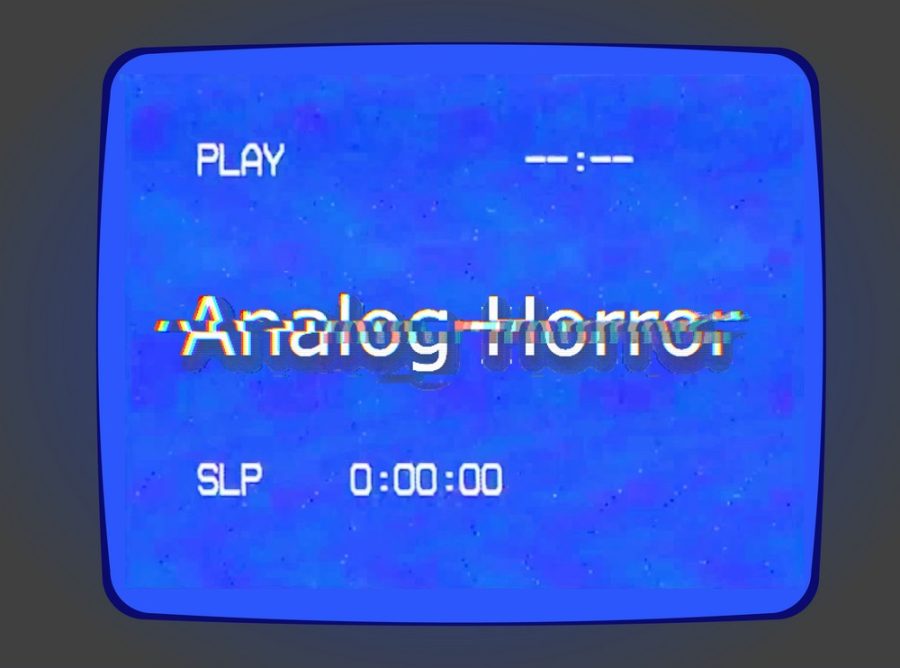Is the Analog Horror Influx Just a Trend or a New Staple of Internet Horror?
June 1, 2022
On March 23rd, 2001, a user by the name of Ted the Caver posted a story on the website Angelfire, sharing his group’s discovery of an unexplored section of a cave. The story would receive updates over time detailing the group’s findings in the cavern, which would progressively get more disturbing as the story continued. This story, now named “Ted the Caver,” is often considered to be the first creepypasta on the internet.
Since then, these creepypastas have evolved from the iconic Slenderman and 4Chan posts to crappy “Among Us at 3 a.m.” videos and even interactive scavenger hunts known as ARGs. While the interest in creepypastas has died down since its peak, creators have been putting a lot of effort into new projects behind the scenes, and as early as 2016, a new era of internet horror has started to pop up.
Analog horror is a subgenre of ARGs that originated on Youtube. While the common ARG would be an interactive story that awards the audience with pieces of the puzzle locked behind ciphers and codes, analog horror has no audience interaction. Instead, it focuses on telling a story, giving clues along the way to solve the mysteries of the world being displayed. This new subgenre preys on the fear of old and faulty digital devices. The early times of glitchy and easily hijacked TVs and the loud amber alerts and government-issued warnings that would sometimes play. Often it deals with supernatural beings invading and living in our environment. These stories are told through disturbing broadcast tape recordings, either warning you of the danger or persuading you to submit to these entities. Jumpscares are rare with these, and the true terror comes from the unsettling imagery coupled with the stark contrast of silence and extremely distorted audio.
There are hardly any characters in these videos. The most we get for a character is a mention of a name and the occasional voice of a human. No one-liners to bring light to a terrifying situation, no characters to get attached to, and hardly any signs of someone with an explanation of what you’re witnessing. The content shown can vary between words on a screen or, recordings from many perspectives who have all encountered something abnormal. You get the sense that you are alone, even when voices are heard and faces can be seen because, in reality, these are just tape recordings that you are viewing. The majority of the time you are the protagonist, viewing these loosely connected records, trying to make sense of what’s happening.
This example, however, is just the basis of analog horror. Analog horror can be more than just this, and there have been plenty of series that have either extended out of this basic concept or built upon it.
The first publically released Analog Horror series went by the channel name, CH/SS, with the first video, titled Advertisement #1, published on January 16, 2016.
The series had many aspects of an ARG, with some viewer interaction and links that lead to clues. Unlike an ARG, the story did not progress from these clues. Instead, it progresses whenever the channel owner uploaded a new video. The channel and its videos pulled in some views, but this new style of ARG did not gain popularity until the first video of a channel named Local58TV was released on November 1, 2017.
Ever since the first video from Local 58, these kinds of ARGs, now known as Analog Horror, have seen a surge of creators trying to replicate the eeriness of the series. Some notable examples of the most popular series include Gemini Home Entertainment, Monument Mythos, The Mandela Catalog, and Petscop. Each of these examples has unique concepts and characteristics that experiment with the foundation of Analog Horror. A collection of tape recordings going over other-worldly creatures, viewings of supernatural activity occurring with historical landmarks, government warnings of entities that are carbon copies of human beings, and a recorded let’s play of a game never released to the public.
Fans of these series have built communities revolving around theories and providing new clues and ideas that can get a better understanding of the world they watch. The creators making this content have also built communities of their own, helping each other improve upon their work and brainstorming ideas that will add to what they already have. Despite the terrifying material shown in these videos, the communities are rarely at odds with one another, and people have made friends because of their shared interests in this subgenre.
Analog Horror is a new era of internet creepypastas, an evolution of the nostalgic 4Chan posts and internet urban legends fabricated years ago. It has redefined internet horror and has the potential to redefine horror as a whole. And although it has its flaws, such as new videos taking months to release and many series not being very interesting, I feel as if a truly amazing piece of horror can come out of this.
If it is to fade into obscurity without meeting its full potential, it would at least leave behind half of its potential to the next era of creepypastas, and one can only hope that that era does this one justice.


